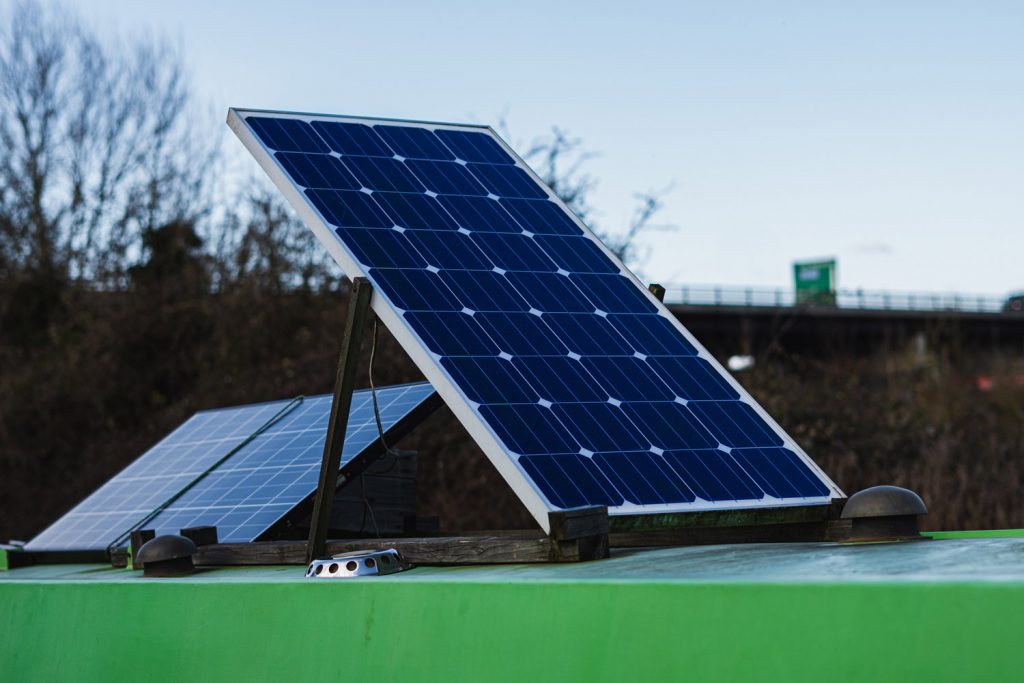Renewable energies are still relatively new in our country, which is why there is a certain degree of uncertainty and confusion about them. Several myths have developed about solar photovoltaics that many people take for granted, but nothing could be further from the truth. In this article we debunk common myths about solar panels so that you can get an accurate picture of the reality of this essential technology for our energy future.
- Solar panels only produce energy when it is sunny and warm.
It is clear that solar panels will reach their maximum output on completely sunny days, but that does not mean that they will stop producing energy in bad weather. Photovoltaic cells trap both direct and indirect solar radiation. This means that even if the sunlight is diffused by clouds, the solar panels are still able to trap it and convert it into electrical energy.
As for the cold, it is the opposite of what one might initially imagine. In fact, solar panels have better conductivity when temperatures are low, so less energy will be lost in capturing solar radiation. So don't worry: your solar panels will produce energy whether it's sunny, windy, or rainy.
- Installing solar panels is expensive and it takes many years to pay back the cost.
It is common knowledge that installing photovoltaic panels requires a major investment that can be costly, but it also depends on the energy needs of the property that we want to cover with our installation. The key is in the word investment. inversión.
From the day a photovoltaic solar energy system is put into operation, we save almost half of the price of our electricity bill. With these savings, the average time it takes to amortise the initial cost is between 5 and 10 years. If we consider that the average lifetime of a solar panel is 25 years, we realise that we will still be saving a significant amount of money for many years after our investment has paid for itself. Unlike a car or a household appliance, which does not produce any financial return, solar panels pay for themselves.
- Maintenance of solar panels is expensive and complicated
Maintaining solar panels is not at all complicated and does not involve an inordinate effort beyond the annual check-up that must be done every year. Rain and wind help to clear the photovoltaic panels of dust and as they are built to spend many years outdoors, their components are extraordinarily resistant to the weather. In addition, the batteries are becoming more and more autonomous thanks to all the advances that have been made in recent years in photovoltaic solar energy technology.
- A solar panel system does not have the capacity to supply 100% of a household's electricity needs.
This is not true. It is enough to realise that nowadays there are entire plants and industrial buildings that are self-sufficient in energy thanks to solar panel systems. Therefore, we can be sure that we can give a normal use to our home without worrying that the energy produced by our solar panel installation will not be enough.
To be completely sure, before making the installation we must calculate the consumption we have at home and so we can install the right number of solar panels.
- Solar panels are highly polluting at the end of their useful life.
Between 85% and 90% of the materials that make up solar panels (such as glass and aluminium) are recycled as they are easily reusable materials. In addition, Royal Decree 110/2015 established by law the obligation to recycle these photovoltaic materials, and the responsibility for collecting and processing the recycling of solar panels is the responsibility of the manufacturers and importers of the same, not the citizen, so you do not have to worry about this issue. As for batteries, some are eco-friendlier than others. Lead acid batteries are highly recyclable. Some 90-95% of them can be fully recycled. Lithium batteries are nowadays more popular, which are much less recyclable (around 5% of them) but compensate for this disadvantage with a longer lifetime than lead acid batteries.



